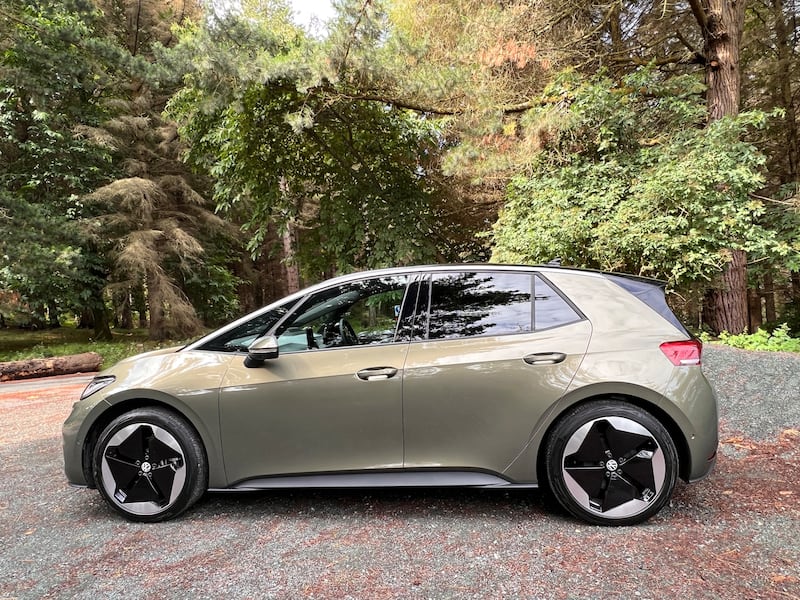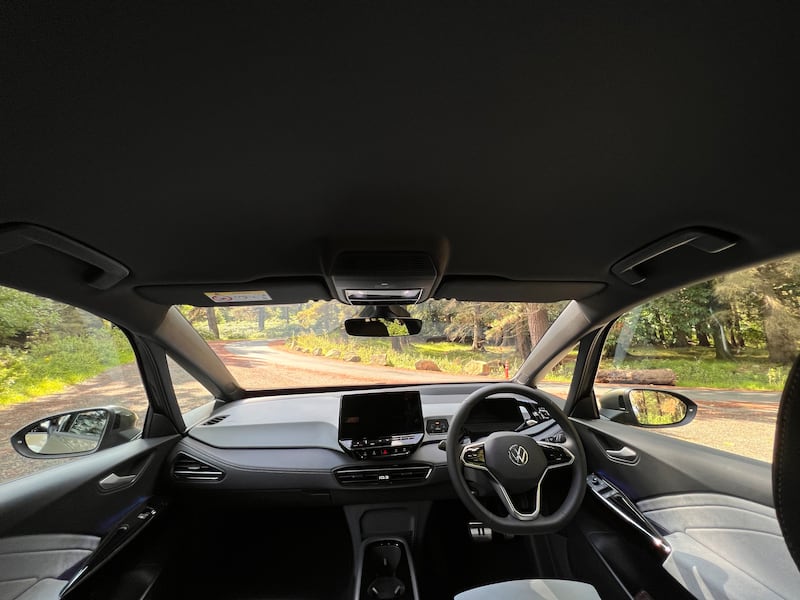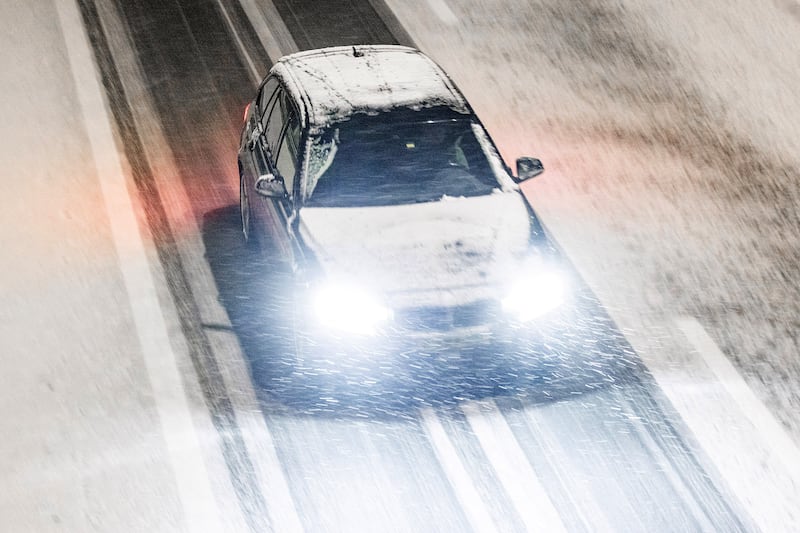When Volkswagen launched the ID.3, back in 2019, it was probably the most expensive way to say “I’m sorry” that ever was. VW’s first on-sale all-electric car was, in many ways, a massive, battery-powered mea culpa for triggering the disastrous diesel scandal back in 2015.
Turning around not merely a new car, but an entirely new type of car, in just four years seemed almost miraculous, but it didn’t take long to spot the gaffer tape and Blu Tack (metaphorically) that had been holding the ID.3 together. Development had been rushed and critical systems, such as the touchscreen infotainment and the way the cabin was put together, were clear and unpleasant signs of this.
So, four years on, VW is having another crack at the ID.3. Originally, this car was supposed to be the third most important model in VW’s history, following on from the Beetle and the Golf, but actually it was the larger, more expensive, SUV-shaped ID.4 that stole the ID.3′s thunder. And its sales. So, do the revisions VW has applied make the hatchback EV more appealing this time around?
Well, the styling has been changed very slightly. You’ll notice that the bonnet is now one continuous panel, rather than having an ugly plastic addendum just before reaching the windscreen. That not only makes the ID.3 slightly more aerodynamically efficient, it also certainly makes the nose look a lot neater. Beyond that, though, there’s still too much of a sense of rounded, soap-bar styling that, to be honest, lacks a bit of character. The ID.2all concept, which will go into production in the next 18 months or so, shows that new VW head of design, Andreas Mindt, has rather sharper, more appealing ideas about how the next generation of electric VWs will look.

Inside, the upgrades are a little clearer. The material quality of the cabin has come on quite a bit, although it still feels a little less welcoming than the interior of the bigger ID.4, and nothing like as nice as that of the (hugely expensive) ID.Buzz. The mix of dark and light grey colours can still look a touch cheap, but the nice seats of our Pro S test car – a mix of “vegan” leather and soft-touch microfibre – were really nice.
The ID.3 gets some things very right – the steering wheel feels good, and expensive, to touch and the little toggle switch for selecting a gear is just a finger-stretch away. Other parts are less good. The central infotainment screen is much-improved, both in its menu layout and speed of response, but it’s still more fiddly than it ought to be. Ford’s touchscreens should be a lesson to VW in this regard. Equally, the electric window switches are needlessly awkward. On a more fundamental level, the vast windscreen pillars rob too much of your forward vision, especially when tackling tricky junctions.
In the back, our test car – resplendent in its Olivine Green paintwork, which is really lovely – was limited to two seats. Why? Because this car has the larger battery option, the 77kWh one, and having a third passenger in the back would push the ID.3 over its weight limit. At least the two available perches are comfortable, with a good view out and plenty of storage thanks to multi-level seatback pockets. The boot, at 385 litres, is okay (fractionally larger than that of a Golf) but it does seem a touch disappointing that an EV, with its inherent packaging advantages, doesn’t offer more room for luggage or shopping.
The driving experience was actually something of an ID.3 strong point, even from launch, and that continues. Refinement and comfort are just excellent, although the optional 20-inch wheels of our test car induce rather too much fidget, so you’d be better sticking with the standard 19-inch rims.
The ID.3 uses a 204hp electric motor driving the rear wheels, so you might think that it would offer a sporty, rear-drive experience á la BMW. It doesn’t – in fact, VW’s engineers have actually tweaked the car’s electronic systems to try to smother any sense that the rear wheels are driven, setting the ID.3 up for a safer, more familiar driving style that’s redolent of the front-wheel drive cars with which customers are more familiar.
That said, it’s not without driving charm. Select sport mode, and the steering becomes more pleasantly weighted, as well as nicely fluid in its motions, and while the ID.3 is never out and out fun to drive, it’s so sure-footed and stable that you can enjoy the way it tackles a twisty road.

In terms of range, this 77kWh version offers a whopping one-charge range of 557km, at least according to the official figures. In real-world conditions, that’s likely to be more like 450km, and we recorded a reasonable 16.5kWh average electric consumption during our time with the car.
Is it worth spending the money to upgrade from the 58kWh model, with its claimed 420km range? That’s a flat no – to get our test car, you’d have to spend €52,335 before grants and incentives. That’s a price tag that pushes this ID.3 into contention with the base models of the Tesla Model 3 and the Hyundai Ioniq 6, both of which are much more talented all-rounders, not to mention the fact that buying the Tesla would get you access to the Supercharger fast-charging network, which alone would make up for any shortfall in range compared with the VW.
You’d be much better off going for the standard 58kWh Pro model, which you can buy for just more than €40,000 once you take off the grants. True, it won’t go 550km on one charge (more like 380km or thereabouts) but then again most of us will rarely need to use that kind of range.
So, while the ID.3 is unquestionably improved by its updates, it still seems like a model caught between stools. It’s not a massive amount of extra cash to upgrade to the ID.4, and Irish buyers have clearly voted with their wallets in that regard. It’s also considerably more expensive than the equivalent MG 4, which is more fun to drive (although the VW’s cabin is vastly better than that of the MG). It also has to contend with the brilliant Renault Megane E-Tech, which is also pricey but which can offer a better infotainment system and hugely useful 22kW AC charging. Equally, if you’re willing to sacrifice a bit of range, a Nissan Leaf is vastly more affordable.
Four years on, VW has ironed out some of the ID.3′s kinks, but it seems to me that we’re still waiting for the definitive electric Volkswagen. My suspicion is that the upcoming, and much more affordable, ID.2 will be it.
Volkswagen ID.3 77kWh Pro S: the lowdown
Power: 150kW e-motor developing 204hp and 310Nm of torque, powering the rear wheels via a single-speed automatic transmission.
CO2 emissions (annual motor tax): 0g/km (€120).
Electric consumption: 15.4kWh/100km (WLTP).
Electric range: 557km (WLTP)
0-100km/h: 7.9sec.
Price: €49,259 as tested, ID.3 starts from €40,607 (inc incentives).
Verdict: Better than it was, but still not as good, nor as affordable, as it ought to be.












